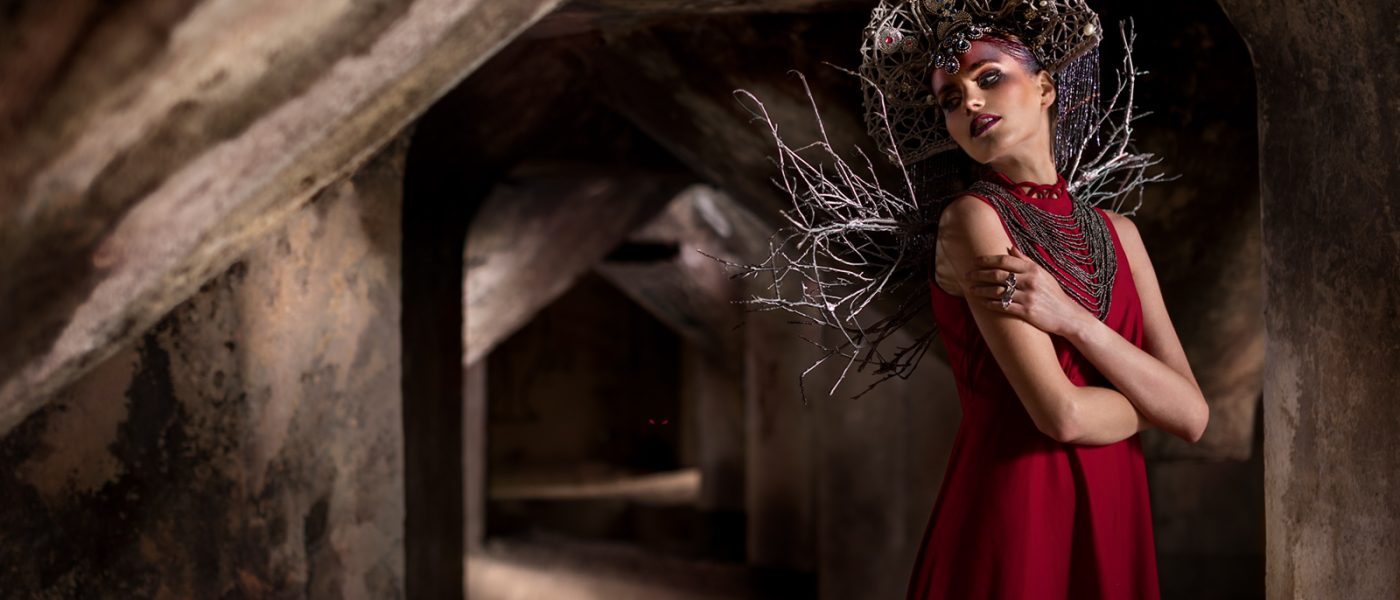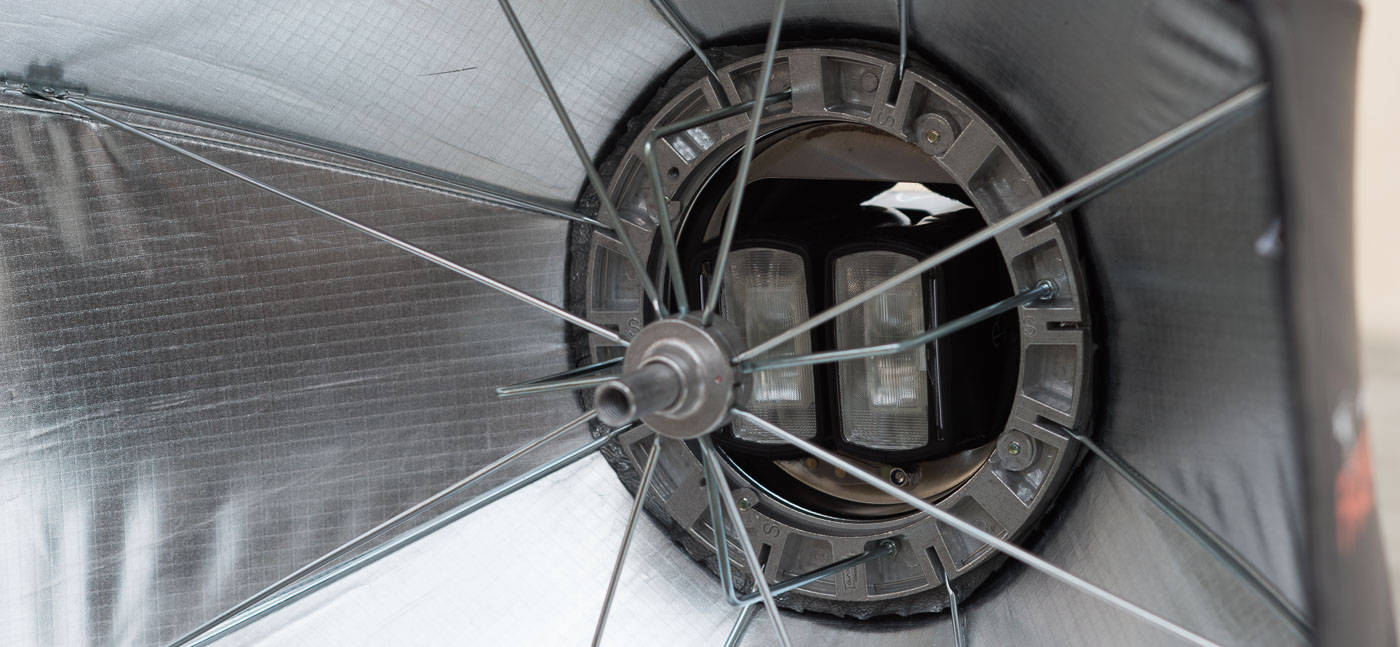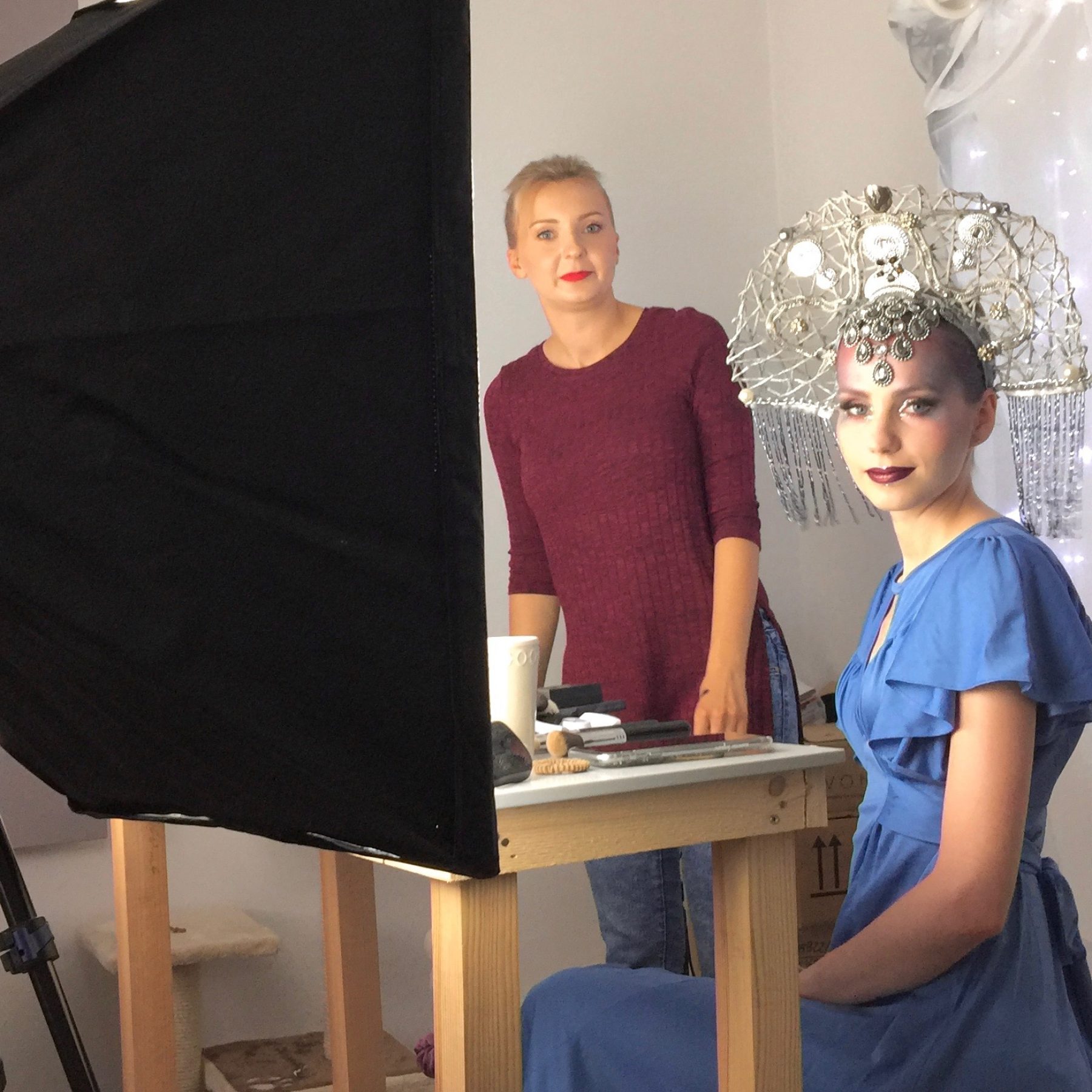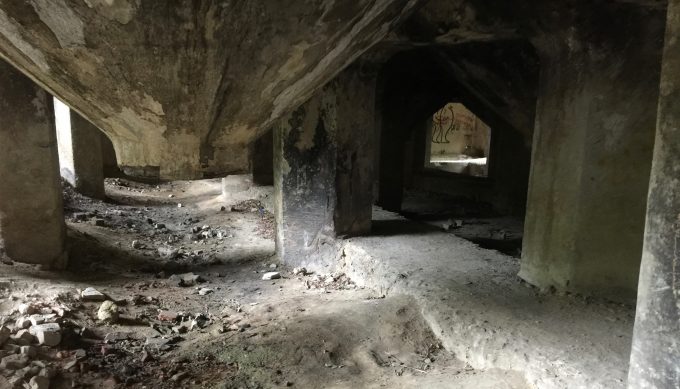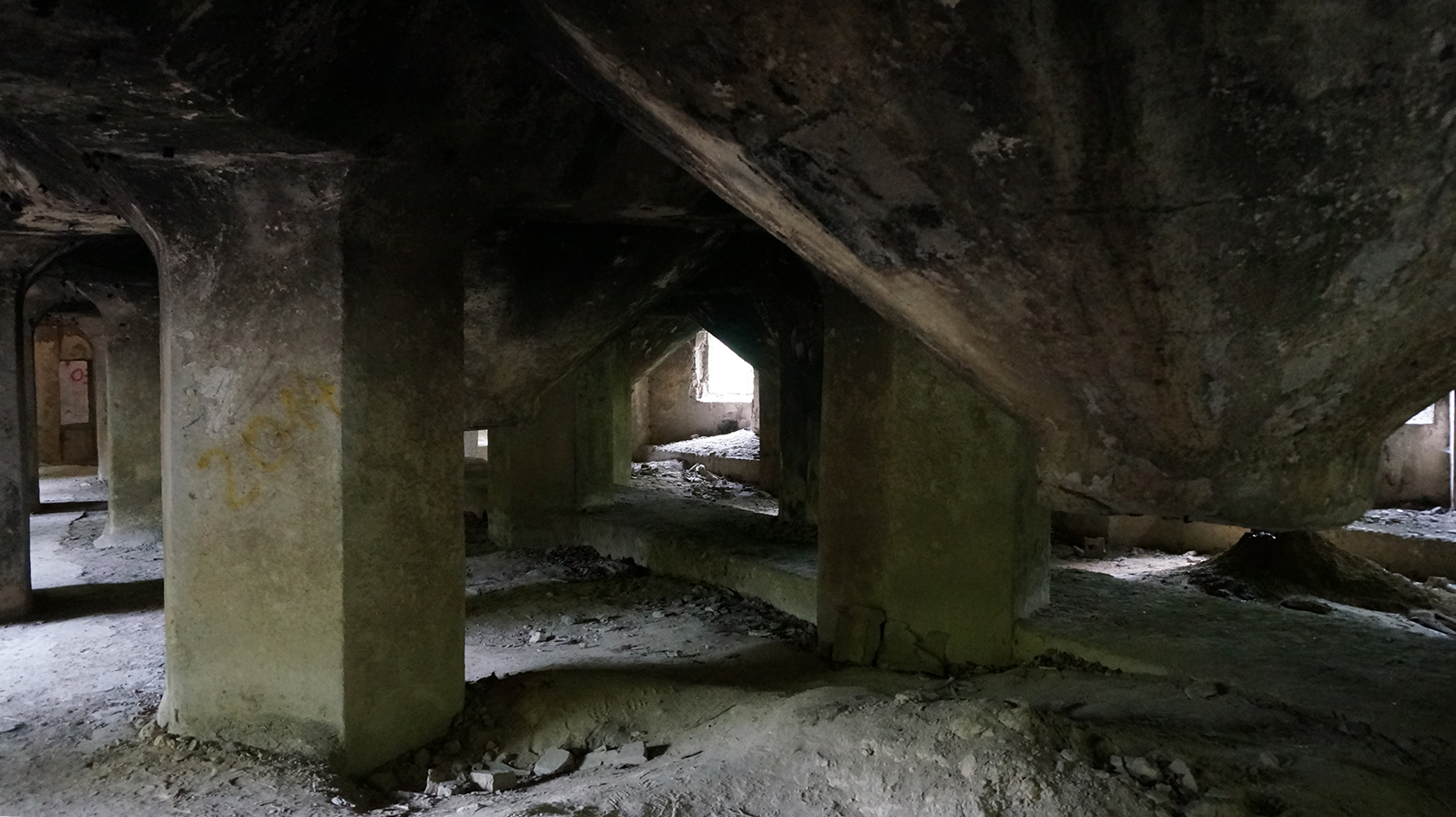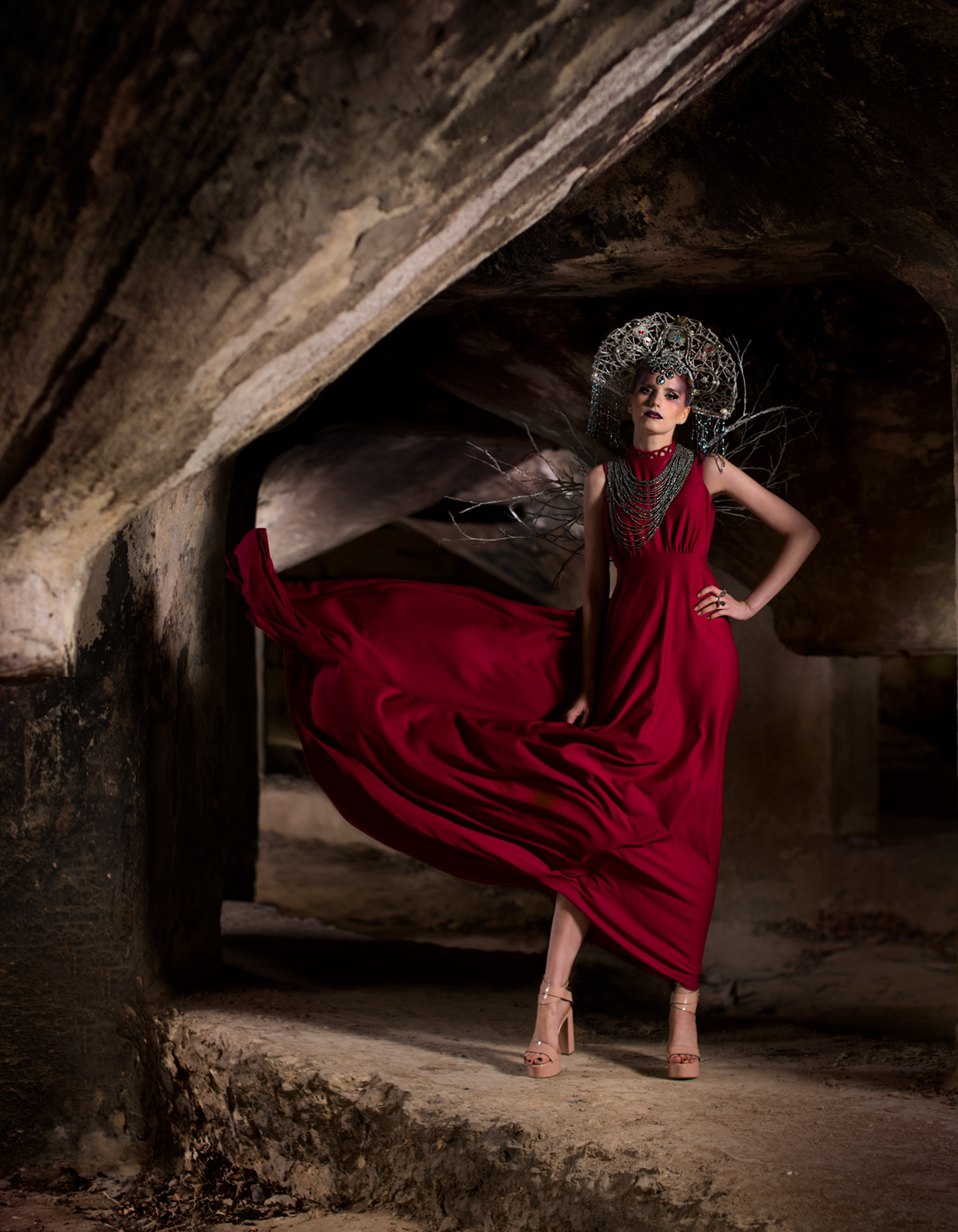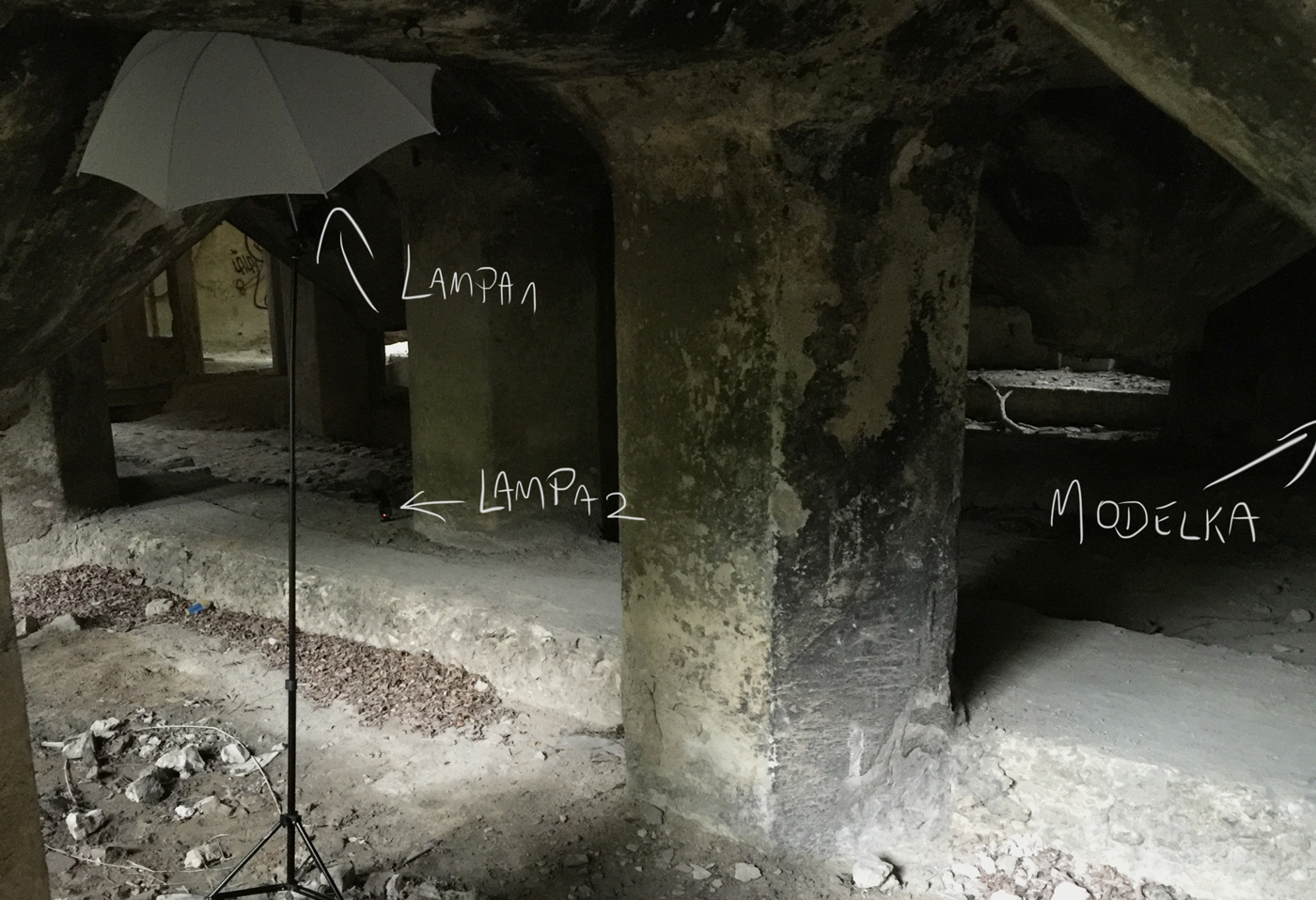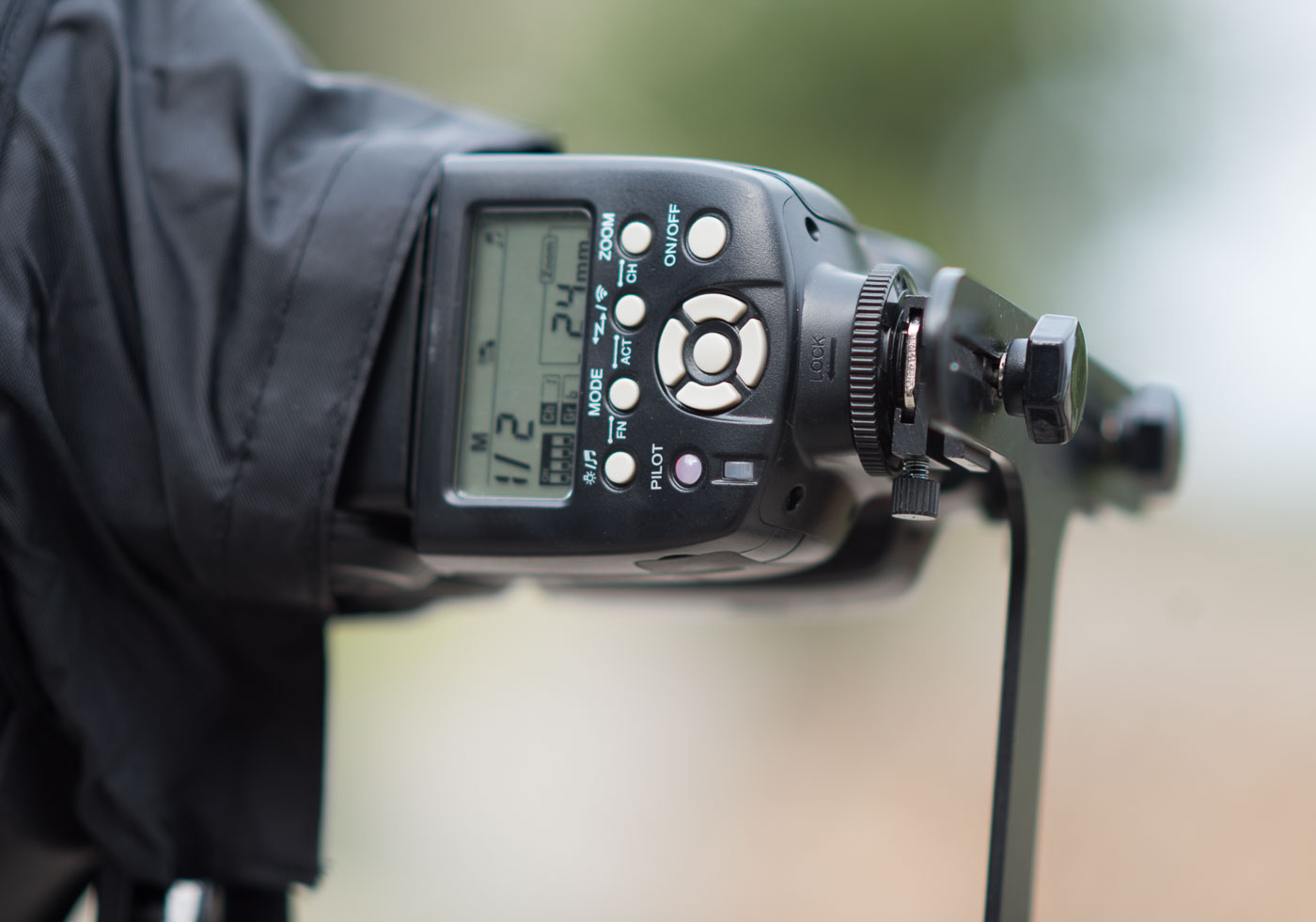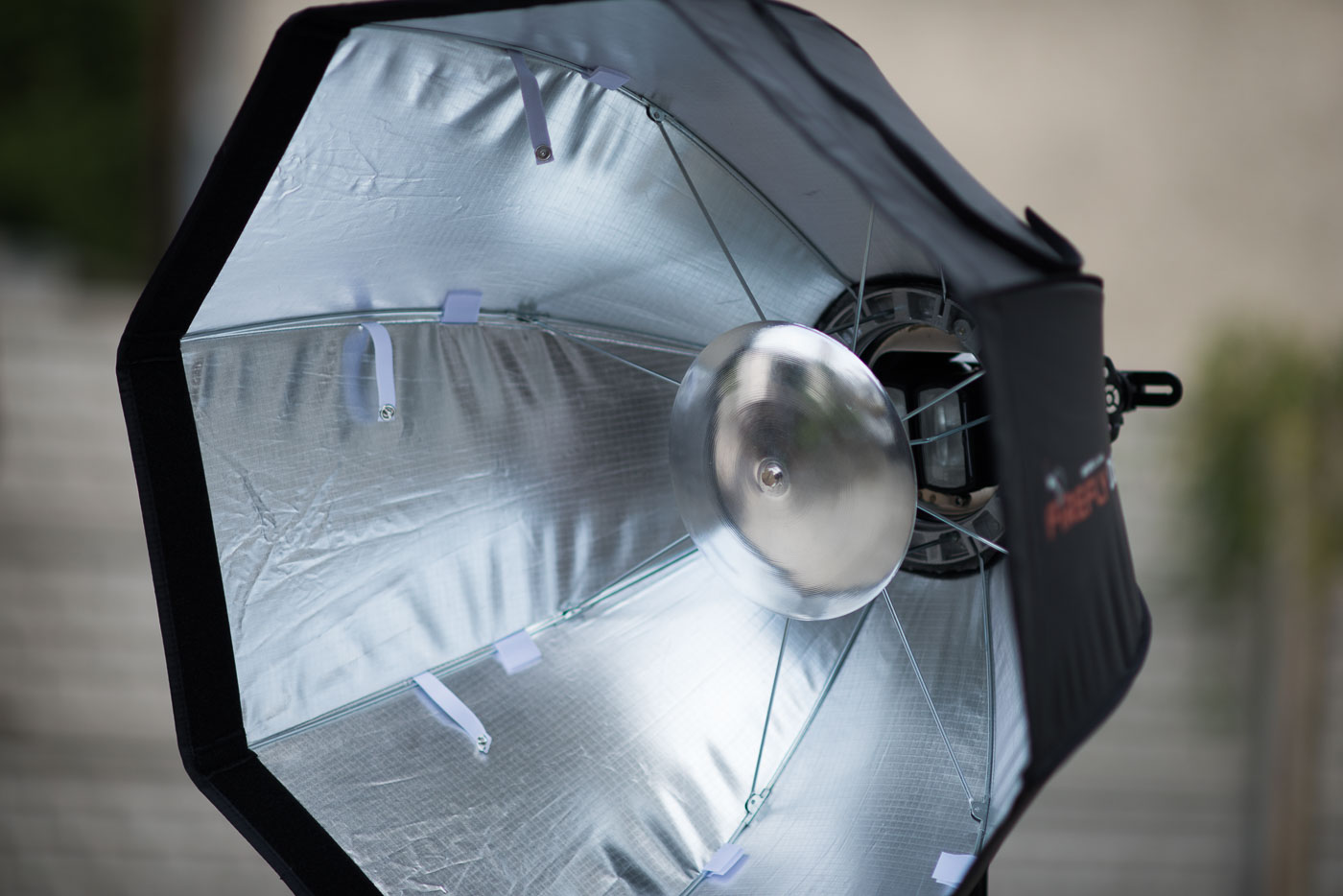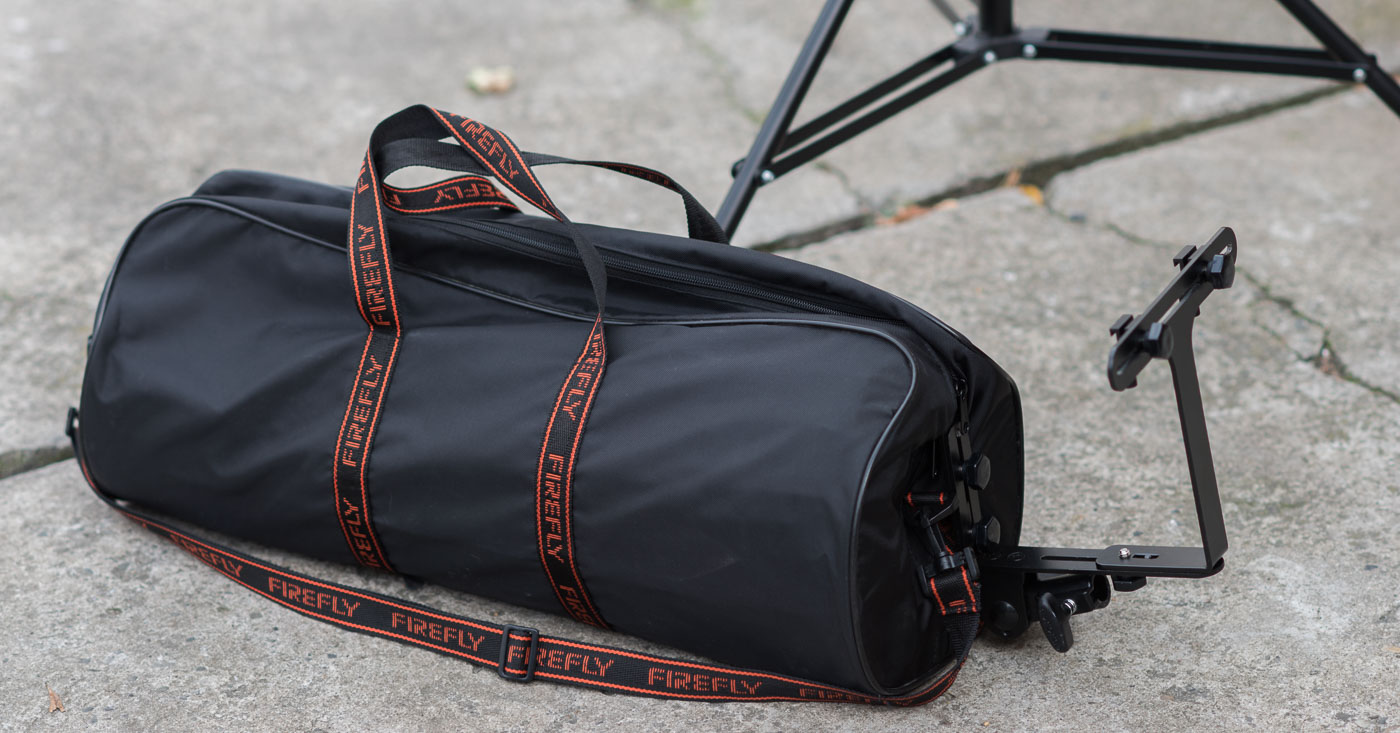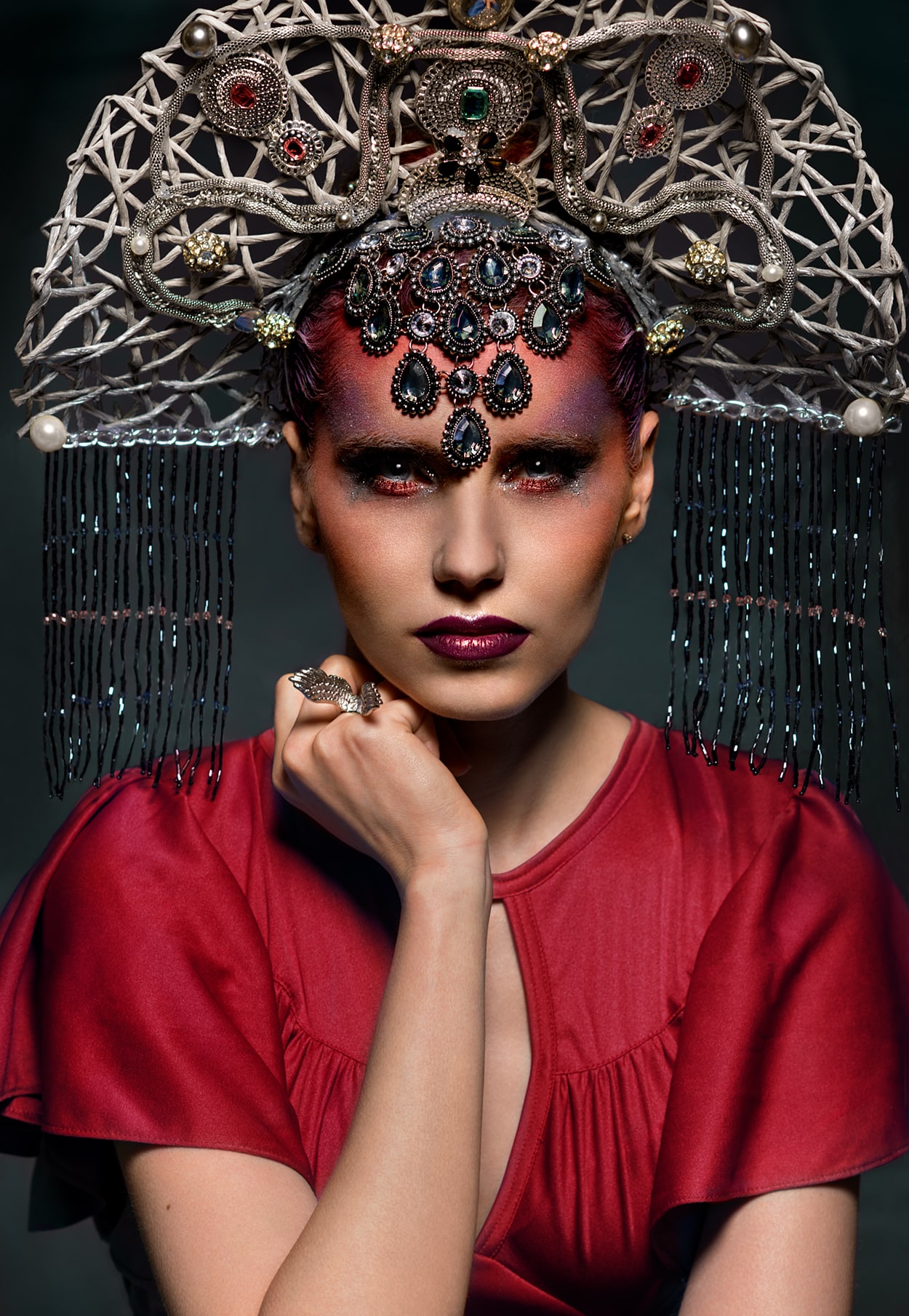I’ve been using my beloved, super cheap YongNuo YN-560IV lamps lately. It may not be anything unusual, as I use them all the time, but this time they weren’t a supplement to studio lamps, but the only source of light. I’ve been doing this for the past few months on other shoots as well, so it’s time to dedicate a whole post to these lamps because what they offer is completely inadequate for their price. I decided that I will describe the lamps in more detail next time and today I will only mention them. During this shoot and others I did while in Europe, I used the Aurora FireFly Duet S 75 cm/30 in octa, dedicated to working with speedlights. And that’s what I’ll focus on today.
From the outside, the Aurora FireFly looks like any other octa: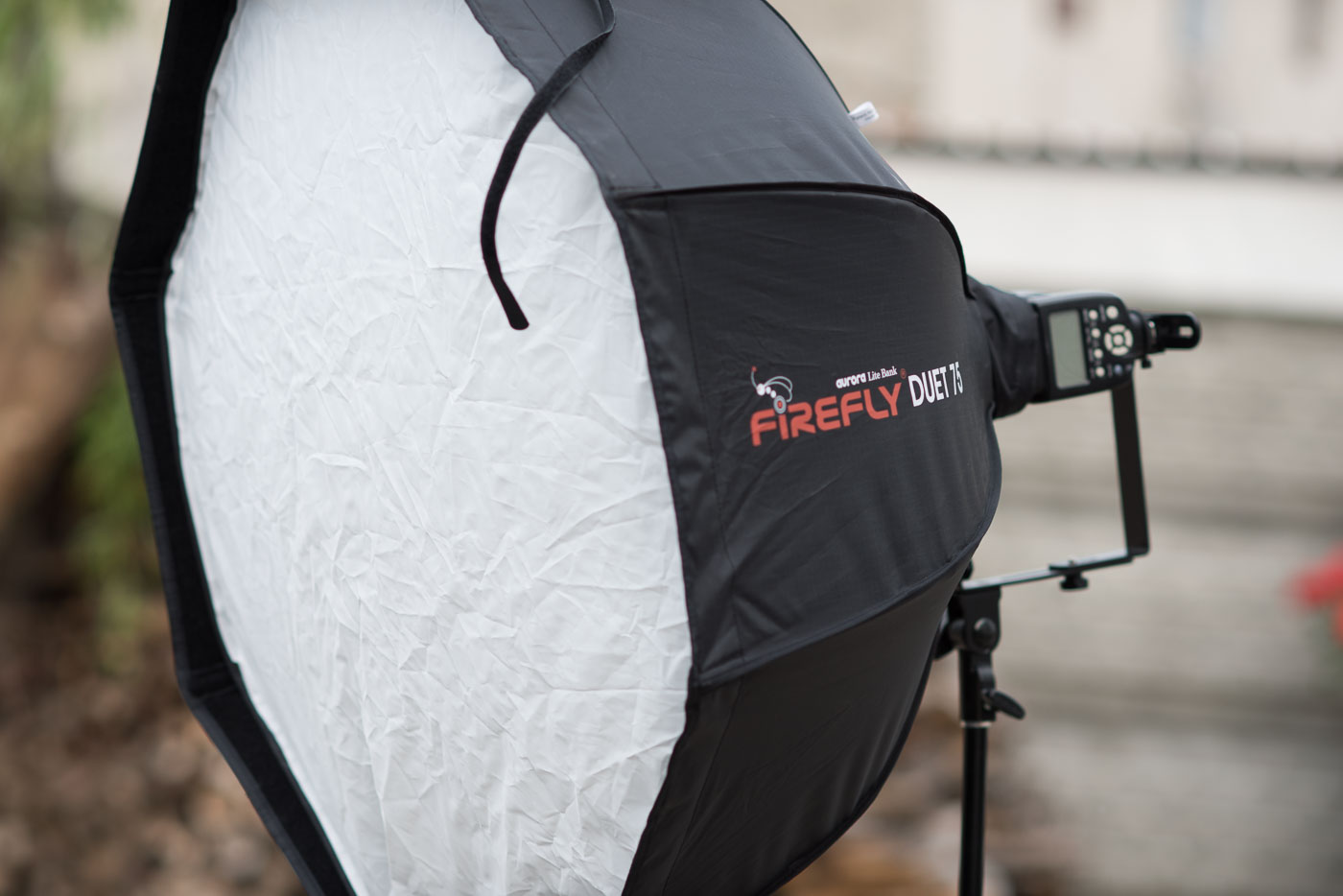
However, this version is designed for use with speedlights, and with two at once, which was crucial for this shoot. One lamp would have been too weak. If I had taken an octa with a Bowens mount, two reportage lamps of this class would not fit there (update: now in some mounts it is possible), so you have to be creative with mounting lamps in ventilation holes, which is neither convenient nor fast.
Also, as you can see, this modifier is quickly foldable, but I’ll get back to that later.
The beginning of the shoot
We had been planning this shoot with Karolina Zientek for a long time. It used to be easier – there was a vision for the photos and a few days later we were on the set. Now Karolina is busy almost every day from morning to night, and I visit Europe only once a year. In addition, the model’s “hat” was also made from scratch by Karolina, so it took time to make it.
We had one blue dress and one red dress, but the red one suited much better.
The model for this shoot was Agnieszka Mrozik from Charme de la Mode. I met her in Bangkok – it was her first trip to Asia. Aga spends a lot of time on the catwalks in Milan, where she flew back to shortly after our shoot. So we were very lucky to be in Poland at the same time.
The make-up was done by Karolina in her apartment, from where we went to the shoot location. It was the ruins of a cement plant in Grodziec (Będzin/Poland).
I’ve done many shoots there, including both from the Tomb Raider series, but they were all in a completely different part of the building – very spacious and lit by light coming in through holes in the walls and ceiling. This time we chose a completely different scene in a neighboring building. The ambient light there was very poor – very little light was coming in through holes in the walls, which would have caused a lot of black spaces interspersed with white spots from overexposure in the photos.
The rest would have been very softly lit, partly because the day was so cloudy and partly because before the light reached the location, it had to bounce off many surfaces. Usually, this is an advantage, but not for me. Like on most of my shoots, I wanted sharper light, highly contrasting. To achieve this, I had to use flash lamps, flash them strongly from the side, and limit the amount of ambient light (thus getting rid of overexposed areas and completely changing the look of the photographed place).
The shoot
The effect of my Aurora Firefly and other lamps settings was as follows:
Nikon D810 | Sigma 50mm 1.4 EX DG HSM | F/2 | 1/50 | ISO 160
Nikon D810 | Sigma 50mm 1.4 EX DG HSM | F/2 | 1/50 | ISO 160
Setting up the lighting took me much longer than I expected – for over an hour I was running around the set, constantly moving the lamps and changing their angle by a few degrees. The problem was the numerous columns and pillars that blocked the light’s path – I had to carefully choose a place to put the lamp. It would have been easier if I had taken more lamps with me, but I only packed four, two of which were in the octabox. I tried to compensate by using additional 180 x 120 cm/70 x 47 in sun reflectors, which were supposed to bounce light into too shaded areas, but the effect was too weak.
In the end, I managed to set everything up according to plan. To achieve this, one of the lamps shone through a transparent umbrella – in this way, the light covered a larger area and was able to illuminate part of the background that was previously like a black hole. I placed the stand with this light on the right side – the same side from which some sunlight was coming in.
There was still one lamp dealing with the background – placed on the ground and aimed at the area that was still in the shade. Usually, one lamp would be enough for this (especially with an umbrella), but as I mentioned before, this time the situation was more complicated.
Lamps illuminating the background
So we have two lamps illuminating the background, plus of course the main lighting, directed at the model. Usually, I started setting up everything from the main lighting, and dealt with the background at the end.
Aurora FireFly Duet S 75 cm/30 in
And here we come to the Aurora FireFly Duet S Octa, in which two lamps can be mounted. In most cases, I could handle with just one lamp by simply increasing the ISO if the lamp’s power was not enough. However, this time it wouldn’t work. The ambient light would start filling areas that were supposed to remain in the shade. This would mean the need for strong darkening of low tones during post-processing, as well as increasing contrast, suppressing lights, etc. In other words, the atmosphere would be suitable for Photoshop-edited photos, instead of straight from the shoot. But since the same can be done with lamps, why complicate things – one lamp is not enough, but two were enough. The first one was at full power, and I adjusted the second one as needed. The tripod with the octa was located at 4 o’clock, no further than 3 meters/10 ft from the model.
Two lamps are also useful when the power of one is sufficient, but a lot of shots need to be taken in a short time. At full power, it won’t work because eventually the temperature sensor will block flashing until it cools down. Then, two lamps set at half power are a much better option than one at max (it’s actually impossible to overheat them in normal conditions). An additional advantage is also a shorter charging time.
The Aurora FireFly Duet S Octa has a diameter of 75 cm/30 in. Ideal for portrait shots, but I was afraid it might not be enough for full-body shots – personally, I prefer 90 cm with a grid, and smaller sizes only for portraits. It turned out that the size is just right for the required atmosphere of the photos, although I used this octa without a grid. Its absence was not entirely my choice – I don’t have it in this size at all. Theoretically, Aurora has a grid in its offer, but it is not available in Poland. The problem is that 75 cm/30 in is a rather unusual size, so it’s hard to find a replacement.
It’s a shame because sometimes the grid is essential, but with this size of modifier, it would apply rather to portraits, not full-body shots. In the case of this shoot, even if I had a grid, I wouldn’t have used it because too many places would be in the shade. Moving the lamp away from the model would theoretically solve this problem, but it would create another one – primarily, too harsh shadows. Also, in the case of this shoot, it simply wasn’t possible to move further away due to obstacles hanging from the ceiling. So the grid wouldn’t be used anyway, but it would definitely be good to have it for other shoots.
The FireFly Duet S doesn’t have to be a softbox. It can be converted into a beauty dish. To do this, you need to buy a reflector that screws into the octa using the included screw.
In the studio version (Aurora FireFly XL), I used this solution for some photo sessions. Taking a normal 70 cm beauty dish on location is completely inconvenient – I only do it when I also take the entire studio equipment, which is so heavy and weighs so much that the 70 Beauty Dish doesn’t change much in this regard.
With FireFly, the situation is completely different because not only is the whole thing much lighter, and takes up much less space when folded, but it is also quickly foldable (which means it has a mechanism similar to that in umbrellas – just slide one part and it’s ready to use). Typically, studio softboxes require tedious mounting of all rods every time they are unfolded, which is completely impractical. In the studio, this is not a problem because it is usually done once – right after purchase. In the field, it’s a different story. I took studio softboxes to the outdoor photo shoots a few times and every time I said to myself “never again”.
Once upon a time, quick-foldable modifiers were a rarity, now it’s already a popular solution. Unfortunately, after folding, the quick-foldable softbox takes up much more space than a regular one, but that’s the price of convenience. FireFly comes with a special bag with a handle to simplify transport to the maximum. Usually, I replace factory suitcases, bags, and covers with my own bags (often due to weight), but there was no need here. Unfortunately, the handle for the speedlight does not fit inside, and it is a waste of time to disassemble it every time, so mine just stuck out of the case.
It can also be reversed to stay less, but it is not necessary
I also don’t remove the diffusing layers for transport. The material is much more wrinkled as a result, but it doesn’t bother me. I also leave the fabric on the octagon and only detach a piece of it to access the mechanism responsible for folding and unfolding. Theoretically, I could do this by inserting my hand through the hole for the lamp, but it’s hard to fit in there and it’s uncomfortable. Unfortunately, there is no zipper that would suffice to detach and insert your hand through it. In the XL version (dedicated to studio lamps), the zipper is there, and thanks to that, folding the octagon is very convenient. Of course, these zippers are not intended to push hands into them, but as ventilation, which is simply unnecessary in speedlights.
Beauty
In addition to the above photos, one beauty was also created.
The setup was so simple that it doesn’t make sense to dwell on it because I’ve already described almost identical ones. Two lamps were located in the FireFly mounted centrally in the middle. I held the camera just under the softbox. I used a regular tripod, not a boom. In addition, one lamp illuminated the background (in its role, a black side of 5in1 180 x 120 cm/70 x 47 in sun reflector).
Is it worth it?
I suspect that with the FireFly Duet S, many people will be shocked by the price, which is currently almost $300 without grid. Aurora has never made very cheap things (and quality went hand in hand with the price), however. FireFly XL for studio lamps, which I use regularly, is not cheap either, but despite its larger size, it costs less than the version for speedlights.
I have nothing to complain about the quality – the mechanism for unfolding is very good in Auroras. It’s made entirely of metal – works easy and does not require moving any lock. It is also difficult to fault other elements. In cheap softboxes, this is usually done much worse. So on the one hand, the quality is very good, on the other hand, it was already there in the larger version, dedicated to studio lamps, and at a slightly lower price.
The importer provided me with this octa to carry out several photo sessions. Would I buy it? If I needed something for two lamps outdoors, then probably yes, but I would also look for a grid for it because, as seen from the descriptions of my other sessions, I put it on almost every modifier. Without a grid, its usefulness for my portrait sessions would be greatly reduced, as it would be okay for full body (due to the small size of the modifier).
Summary
The complete abandonment of studio lamps (or even outdoor lamps) during this session was a great idea. The power in speedlights was enough, and the Aurora FireFly Duet S was tested by me for the first time. Later, I also used it for more beauty sessions (which will also appear on the blog) and also had no objections, except for the aforementioned lack of a grid.
By the way, I found out that 75 cm may make sense when photographing full body. It gives a bit better mobility than 90 cm and is less susceptible to wind.
The Firefly Duet S octagon was sent by the Fripers.pl store.
